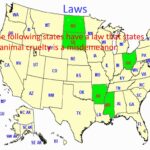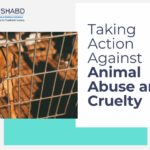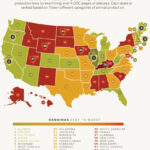Animal welfare is a topic that elicits passionate debate across the globe. In the context of the United Kingdom and the United States, the legal frameworks surrounding animal cruelty differ significantly, reflecting varying societal values and historical antecedents. This article delves into the nuances of what constitutes animal cruelty in these two nations, outlining the contrasting laws, penalties, and societal implications, and revealing how these legal systems shape public perceptions and treatment of animals.
Definitions and Parameters of Animal Cruelty
Animal cruelty can broadly be defined as the infliction of suffering or harm upon animals, whether through direct action or negligence. In the UK, the Animal Welfare Act of 2006 serves as the cornerstone of animal protection legislation, encompassing a wide array of offenses, from deliberate abuse to neglect. The act outlines the “duty of care” that animal owners owe to their pets, mandating that they provide a suitable living environment, adequate food, and necessary medical care. Furthermore, it recognizes the emotional well-being of animals, acknowledging that suffering does not solely stem from physical harm.
Conversely, in the US, animal cruelty laws are not unified under a single federal statute but vary considerably by state. Most states have enacted anti-cruelty laws that may address physical abuse and, to some extent, neglect; however, the scope and enforcement of these laws can differ dramatically. Some states, like California and Illinois, have comprehensive laws that include felonies for severe cases of abuse, while others may impose minimal penalties for similar offenses. This patchwork system creates a milieu of legal interpretations that can be both frustrating and enlightening.
Types of Animal Cruelty
Both the UK and the US delineate between two primary categories of animal cruelty: active and passive. Active cruelty involves direct actions that harm or cause pain to animals—think of beating, stabbing, or intentionally abandoning an animal to suffer. In the UK, cases of active cruelty can lead to imprisonment of up to five years, hefty fines, or bans from owning animals in the future. The severity of punishment often reflects the gravity of the offense, reinforcing societal condemnation of such actions.
On the other hand, passive cruelty, often manifested through neglect, poses a substantial challenge for law enforcement. In the UK, neglect is taken seriously under the Animal Welfare Act, where failure to provide care may lead to similar penalties as those for active cruelty. In the US, however, the prosecution of neglect can vary, often necessitating a higher burden of proof and sometimes resulting in only civil penalties rather than criminal charges.
Legal Consequences and Enforcement
Legal consequences for animal cruelty offenses illustrate a stark divide between the UK and the US. In the UK, the RSPCA (Royal Society for the Prevention of Cruelty to Animals) has the authority to investigate allegations of animal cruelty and even bring prosecutions in its own right. This empowers a dedicated organization to act decisively against cruelty, providing a robust safety net for vulnerable animals. The omnipresence of the RSPCA also serves as a deterrent for potential offenders, knowing that vigilant eyes are always watching.
In the US, the lack of federal oversight leads to a more fragmented enforcement landscape. While organizations such as the ASPCA (American Society for the Prevention of Cruelty to Animals) and various local humane societies work tirelessly to combat cruelty, their powers can be limited to specific jurisdictions. Furthermore, in many states, the failure to enforce existing laws or to lack adequately funded animal control agencies hampers the ability to protect animals effectively. As a result, numerous instances of animal cruelty go unpunished, creating an unsettling precedent that diminishes respect for animal life.
Public Perception and Societal Attitudes
A pivotal element of this discussion lies in public perception of animal rights and welfare. In the UK, there is generally a stronger cultural emphasis on animal rights, leading to greater public support for stringent laws and humane treatment. This has fostered a progressive narrative around animal welfare, where animal rights are increasingly framed as a moral imperative rather than a mere legal concern. Campaigns aimed at raising awareness, such as those against puppy mills or for banning animal testing, have garnered significant public attention and action.
In the US, however, societal attitudes can be more fluid. While there is considerable support for animal rights among many communities, a significant portion of the population may prioritize other issues, viewing animal welfare as secondary. The legal status of animals as property in many states compounds this perception, making it easier for individuals to justify neglect or abuse—simply because it falls under personal property rights. Additionally, cultural factors, including regional differences, heavily influence perceptions, with initiates for advocacy often appearing more prominently in urban areas than in rural communities.
Conclusion: A Call to Action
The examination of animal cruelty laws across the UK and the US reveals profound insights into how each nation values its non-human inhabitants. Legal frameworks are essential, but real change also requires a shift in societal attitudes—an evolution toward viewing animals with empathy and respect. As advocacy for animals continues to grow, the hope is that comprehensive reforms will arise, leading to justice for the voiceless creatures who share our world. By fostering a culture of compassion and vigilance, society can pave the way for a future free from the shackles of cruelty, where every animal is treated with dignity and respect.







